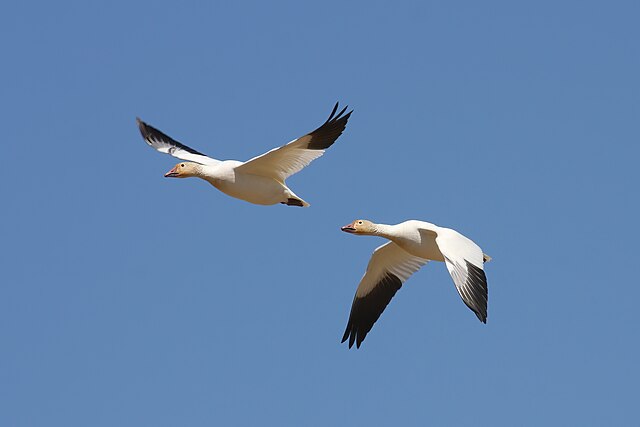The Canada goose, sometimes called Canadian goose, is a large wild goose with a black head and neck, white cheeks, white under its chin, and a brown body. It is native to the arctic and temperate regions of North America, and it is occasionally found during migration across the Atlantic in northern Europe. It has been introduced to France, the United Kingdom, Ireland, Finland, Sweden, Denmark, New Zealand, Japan, Chile, Argentina, and the Falkland Islands. Like most geese, the Canada goose is primarily herbivorous and normally migratory; often found on or close to fresh water, the Canada goose is also common in brackish marshes, estuaries, and lagoons.
Canada goose
Two individuals in the middle of a fight
Profile view of a Canada goose head
Photo: Tom Koerner/USFWS
A goose is a bird of any of several waterfowl species in the family Anatidae. This group comprises the genera Anser and Branta. Some members of the Tadorninae subfamily are commonly called geese, but are not considered "True Geese" taxonomically. More distantly related members of the family Anatidae are swans, most of which are larger than true geese, and ducks, which are smaller.
A greylag goose (Anser anser), with a rail in the background.
Snow geese (Anser caerulescens) in Quebec, Canada
Chinese geese (Anser cygnoides domesticus), the domesticated form of the swan goose (Anser cygnoides)
Barnacle geese (Branta leucopsis) in Naantali, Finland







